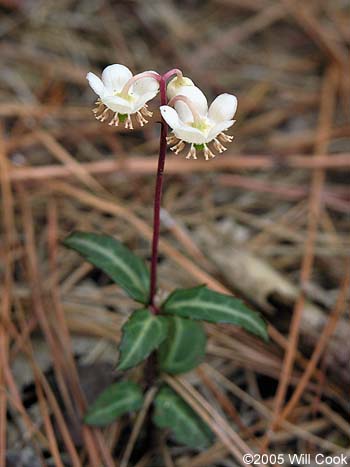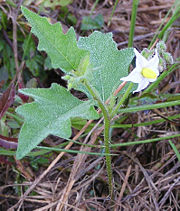Wildflowers
Featured Wildflowers
White: Bloodroot, Ox-eye Daisy, Pipsissewa, Horse Nettle, Queen Anne's Lace
Yellow to Yellow Orange: Common Buttercup, Cinquefoil, Low hop Clover, Daffodil, common Dandelion, False Dandelion, Spotted Jewelweed, Southern or Golden Ragweed, Rattlesnake Weed, Wood Sorrel, Indian Strawberry, Trout Lily
Blue to Blue-Purple: Field Madder, Periwinkle, Pointed Blue-eyed Grass, Blue or Old Field toadflax, Smooth Vetch, Common Blue Violet, American Wisteria
Red: Red Clover, Heartleaf or Little Brown Jug
Purple to Pink-Purple: Carolina Cranesbill, Henbit, Purple Dead nettle, Bull Thistle
White |
||
|
Moist, deciduous woods. Flowers March to April. |
|
Dry, acid pine woodlands. Also called spotted Wintergreen. Flowers May to June. |
|
Fields and waste places. Flowers May to October. |
Dry fields, waste places. Ancestor to garden carrot. Also called Wild Carrot and its long taproot can be eaten. Flowers May to October. |
|
Yellow to Yellow-Orange |
||
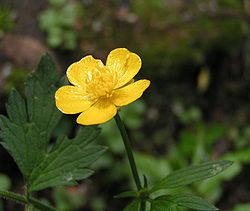 Common Buttercup Ranunculua acris Old fields, meadows, disturbed areas. Non-native from Europe. Flowers May to September. |
 Cinquefoil Potentilla canadensis Dry, well-drained open soil. Common. . Indicator of poor soil. Also called Fivefingers. Flowers March to June |
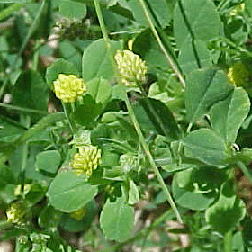 Low Hop Clover Trifolium compestre Fields, roadsides, waste places, lawns. Non-native from Europe. Flowers June to September. |
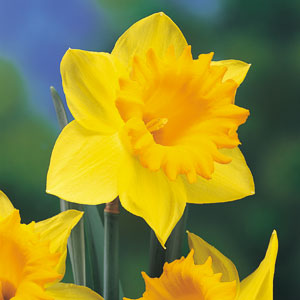 Daffodil Narcissus spp Garden flower associated with abandoned home sites. Originate as planted bulbs. Also called Jonquil or Narcissus. Non-native. Flowers in April. |
 Common Dandelion Taraxicum officinale Fields, roadsides, lawns. Common lawn weed. Leaf margins resemble teeth of a lion. Flowers March to September. |
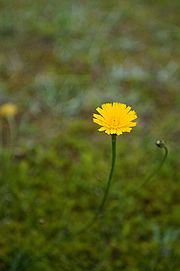 False Dandelion Hypochaeris radicata fields, pastures, roadsides. Common. Flowers March to June. |
|
Impatiens capensis Shaded wetlands. Also called touch-me-not. Stem juice can relieve itching from poison ivy. Flowers attract hummingbirds. Flowers July to October. |
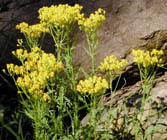 Southern or Golden Ragwort Packera aureus Wet meadows, swamps, moist woods. Flowers April to July. |
 Rattlesnake Weed Hieracium venosum Dry open woods, thickets and clearings. Flowers May to September. |
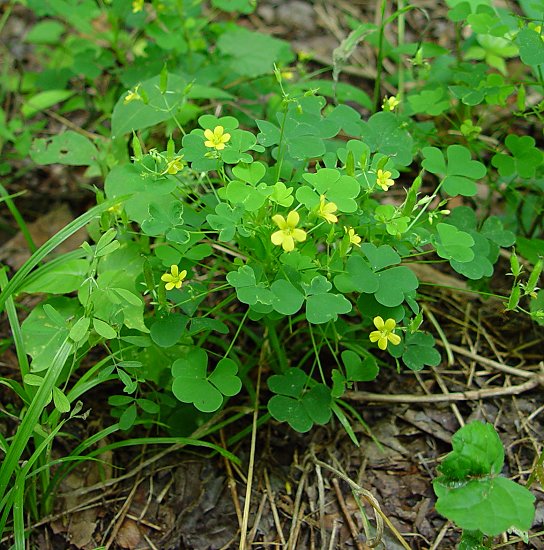 Wood Sorrel Oxalis stricta Waste places, woods, roadsides, fields. Clover-like leaves that taste sour and can be used in salads. Flowers May to October. |
 Indian Strawberry Duchesnia indica Waste places, disturbed areas. Non-native from India. Flowers April to June. |
 Trout Lily Erythronium americanum Rich woods and meadows. The name reflects the similarities between the mottled leaves and the marking on a brook trout. Flowers March to June. |
Blue to Blue-Purple |
||
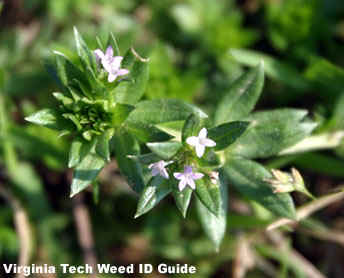 Field Madder Sherardia arvensis Fields, lawns, waste places. Flowers March to August. |
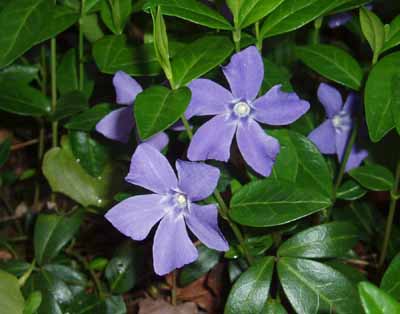 Periwinkle Vinca minor Borders of woods, roadsides, abandoned home sites. Non-native that escaped from cultivation. Also called Myrtle or Vinca. Flowers April to May. |
 Pointed Blue-eyed Grass Sisyrinchium augustifolium Fields, meadows, woods. Flowers May to July. |
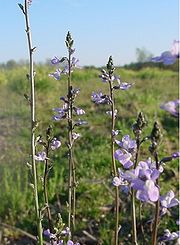 Blue or Old-field Toadflax Nuttallanthus canandensis Open dry, shady or rocky sites, abandoned fields. Flowers April to September. |
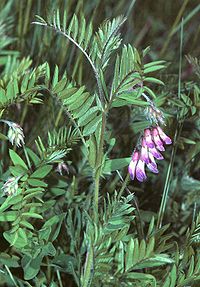 Smooth Vetch Vicia dasycarpa Fields, roadsides, waste places. Flowers April to September. |
.JPG) Common Blue Violet Viola sororia Damp woods, moist meadows, roadsides. Leaves are high in vitamins A and C and can be used in salads. Flowers March to June. |
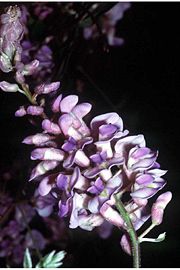 American Wisteria Wisteria frutescens Moist woods and riverbanks. Only native wisteria. Named after Caspar Wistar (1761-1818), an anatomist at the Univ of Pennsylvania. Most Wisteria grown in gardens is from China or Japan. Flowers April to May. |
||
Red |
||
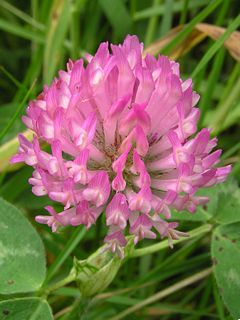 Red Clover Trifolium pratense Old fields, lawns, roadsides. Non-native from Europe. Planted as a hay and pasture crop. Used in crop rotation to improve soil fertility. Flowers May to September. |
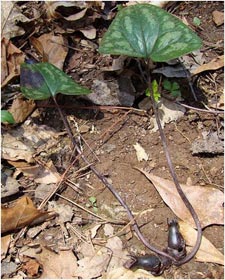 Heartleaf or Little Brown Jug Hexastylis arifolia Moist to dry woods. Aromatic leaves smell like ginger when crushed. Flask-shaped flowers. Flowers March to May. |
|
Purple to Pink-Purple |
||
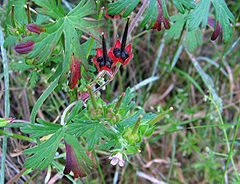 Carolina Cranesbill Geranium carolinianum Dry places, thin woods, fields, waste places. Fruit with sharp beak that resembles a crane. Flowers March to June. |
 Henbit Lamium amplexicaula Waste places, fields, roadsides. Square-stemmed member of Mint family. Flowers March to November. |
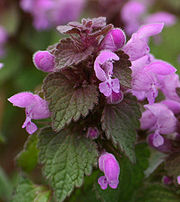 Purple Dead Nettle Lamium purpureum Open places. Flowers February to May. |
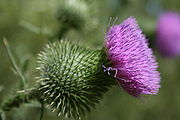 Bull Thistle Cirsium vulgare Pastures, roadsides, waste ground. Nonnative introduced from Eurasia. Sharp prickles on the leaves and stems protect the plant from grazing animals. Superstition says that those who wear thistle are safe from harm. Thistle is the national flower of Scotland. Flowers June to October. |
||

.jpeg)

